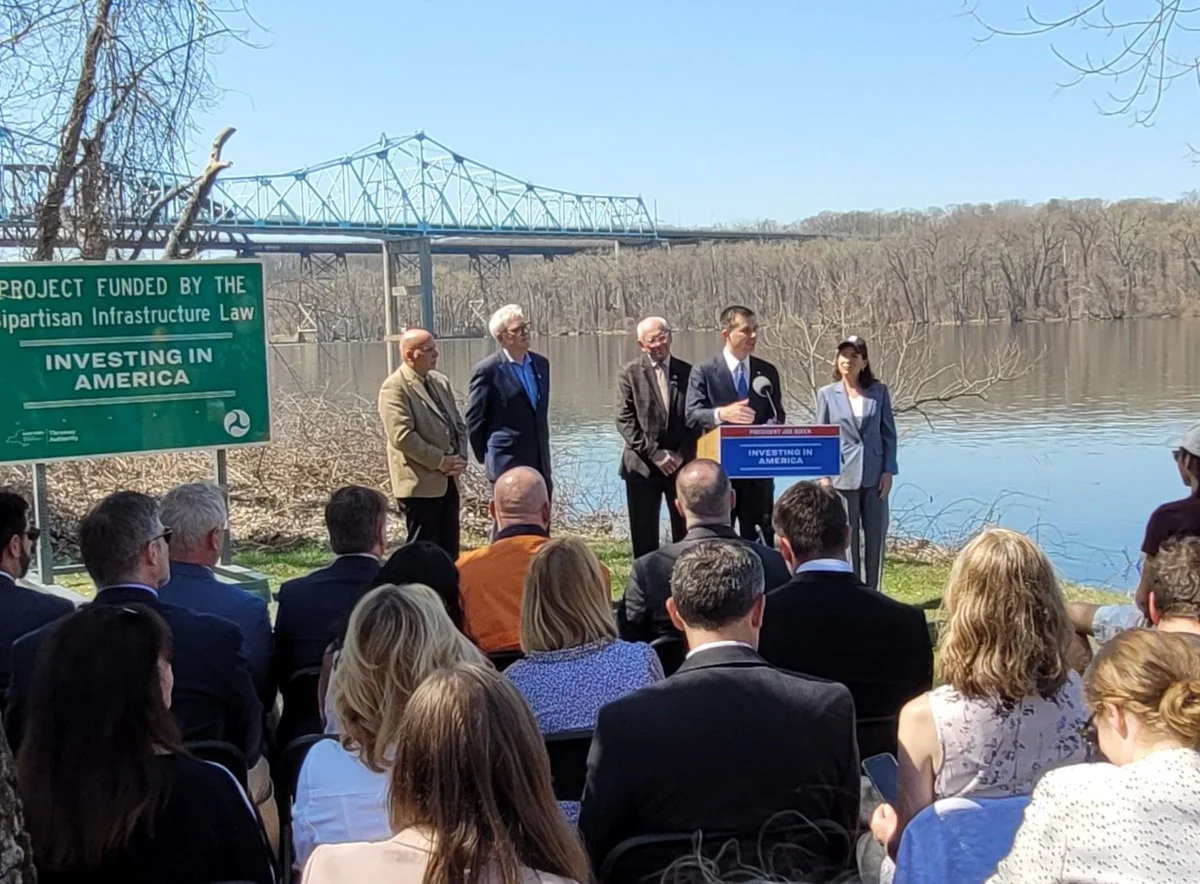On April 13, 2023, U.S Transportation Secretary Pete Buttigieg announced $21 million in federal funds to help complete the restoration of the NYS Thruway Authority’s Castleton-on-Hudson Bridge. The 1-mile long 67-year-old bridge spans the Hudson River just south of Albany, NY.
In 2022, the entire two-lane westbound deck of the bridge was replaced using HDG A767 Class 1. In 2023, with help from the federal Bridge Investment Program, the eastbound deck will be replaced. The bridge was identified as one of the most economically significant bridges in the country requiring immediate attention.
US Rep. Paul Tonko (NY-20), Secretary Buttigieg and New York Governor Kathy Hochul made the announcement. (Photo credit: NYS Thruway Authority)
Most Federal, State and Local Transportation and Public Works Agencies are now mandating 75-100 year life out of their concrete reinforced structures with minimal repair. The Hot-Dip Galvanized Rebar Alliance is honored to play an important role in so many of our nation’s major infrastructure projects.






